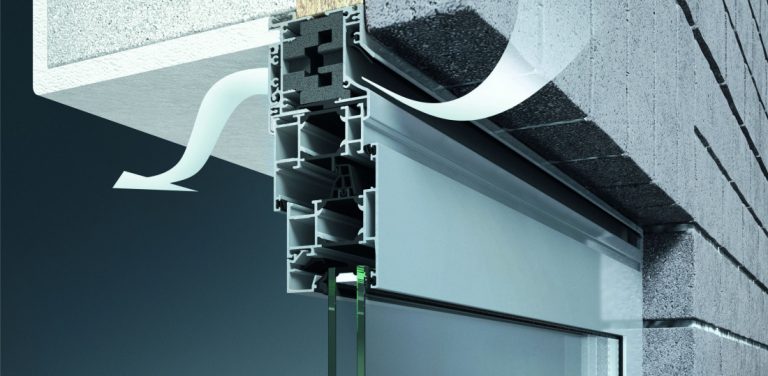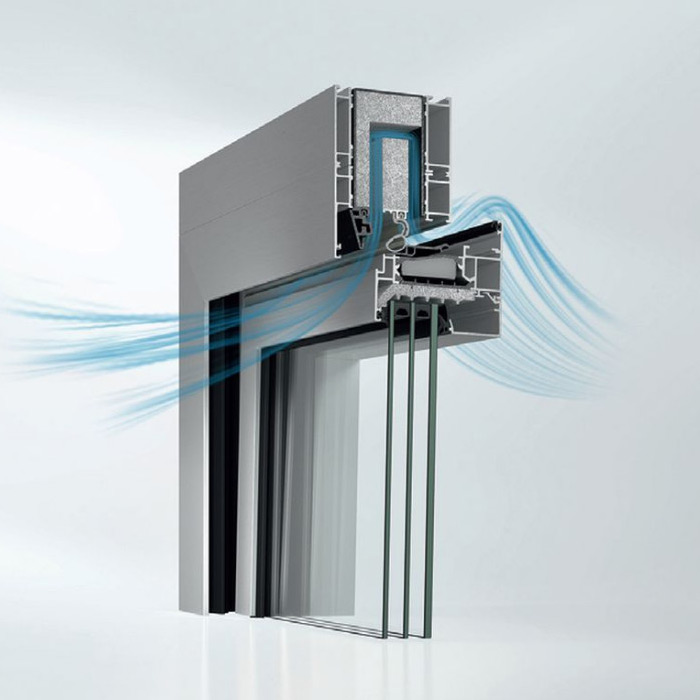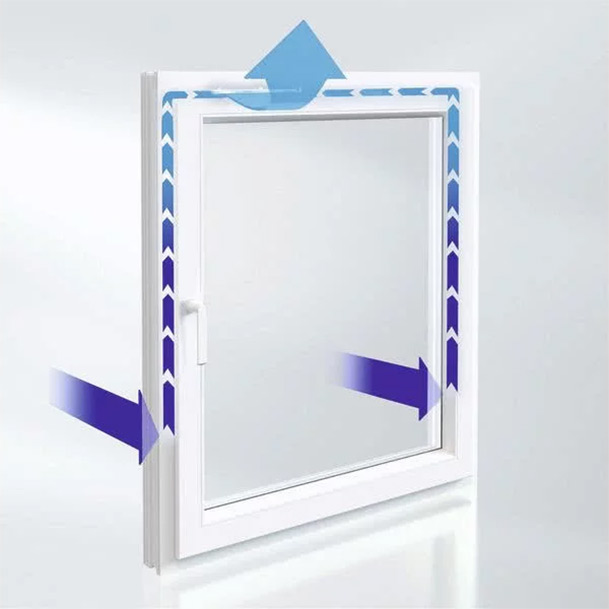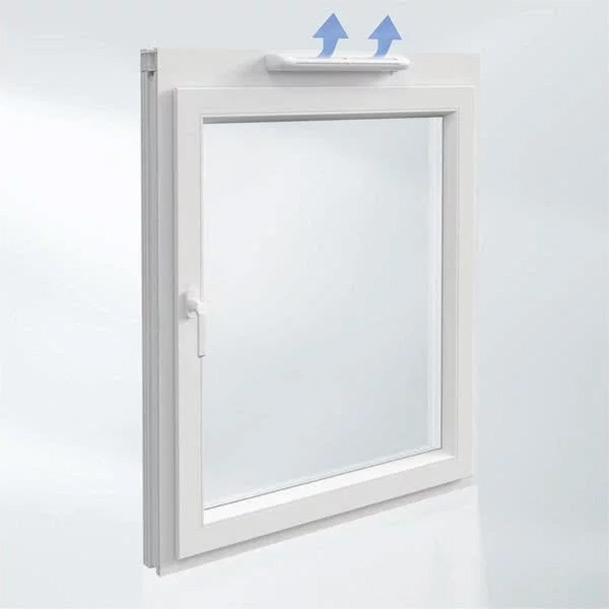
The ventilator brings fresh air into the building, taking care of the comfort of the occupants; it can be installed in the window, but also in other building envelopes, such as the wall.
A new type of concealed ventilator is presented in the video below.
The air flow rate is dependent on the water vapour content (relative humidity) inside the room, i.e. on air pollution resulting from activities such as washing, cooking, drying, etc.
The control sensor is a polyamide strip which, under the influence of changes in relative humidity in the air, changes its length, which causes the damper to open more or less and thus bring more or less air flow into the room.
The amount of air supplied depends on the pressure difference outside and inside the room. This is the case up to the pressure difference level at which the diffuser’s output reaches its maximum value. As the pressure increases further, the wings deflect, limiting the amount of air supplied.
This can be caused, for example, by a gust of wind. The user has the option of closing the shutter, limiting the airflow to a minimum.
Manually controlled diffusers – the amount of air supplied depends on the position of the shutter. The user regulates the degree of opening of the ventilator, deciding on the amount of supplied air. By manually changing the position of the ventilator damper.
Manually controlled ventilators are most often used in places where regulations restrict the use of hygroregulated and pressurised ventilators, e.g. in the case of supplying air to residential rooms with gas appliances such as cookers, thermostats, heaters.


